2 D2 | Fixed Prosth | Diagnosis and Tx planning
1/59
There's no tags or description
Looks like no tags are added yet.
Name | Mastery | Learn | Test | Matching | Spaced |
|---|
No study sessions yet.
60 Terms
the two highest number of malpractice claims in dentistry come from ___________
oral surgery error and diagnosis error
what is the primary treatment goal?
stop progression of disease and maintain existing structures
what is the secondary treatment goal?
restore pt's function and quality of life
what are the determining factors of fixed prosth dx?
a) remaining coronal tooth structure
b) remaining number and quality of strategic dentition
c) remaining level and quality of bone
a) remaining coronal tooth structure
b) remaining number and quality of strategic dentition
remember to __________ prior to making a treatment plan
mount diagnostic casts on an articulator
concept of short dental arch
as teeth are lost, the structural integrity of dental arch is disrupted with a sequential realignment of teeth until a new state of equilibrium is reached
T/F premolar occlusion is acceptable
T/F loss of teeth always leads to further problems unless we can correct
T/F shortened dental arch provokes signs/symptoms of mandibular dysfunction
TRUE
FALSE -- loss of teeth does not necessarily lead to further problems
FALSE -- there is no convincing evidence to show that a shortened dental arch provokes s&s of mand. dysfunction
what is the first step in the process of diagnosis and treatment planning?
identifying patient's chief complaint
pt's chief complaint is:
a) subjective
b) objective
c) assessment
d) plan
a) subjective
after ID pt's cc, what are the next steps?
1) pt's CC
2) history (all necessary info)
3) examinations (intra/extra-oral)
4) mounted Dx casts on semi-adjustable articulator
5) radiographs
what radiographs do we use for fixed prosth dx and tx planning?
fmx and/or panoramic radiograph
you obtain your diagnosis in which step of the SOAP?
assessment
the main indications for a full coverage crown include structural damage due to: ______________
- caries
- trauma
- hereditary condition
- cracked tooth syndrome
T/F you would create a crown for a pre-existing defective crown
T/F you would create a crown for a pre-existing defective large restoration
T/F you would create a crown for a pre-existing large restoration for preventative measure
TRUE
TRUE
TRUE
mild coronal tooth structure damage is defined as _________
when there is sufficient retention provided after tooth preparation for a direct restoration
moderate coronal tooth structure damage is defined as __________
when sufficient retention is provided after tooth prep for an in-direct restoration
e.g. inlay, onlay, or 3/4 crown or 7/8 crown
moderate to severe coronal tooth structure damage is defined as __________
when sufficient retention is provided after a tooth preparation for a full coverage restoration
severe coronal tooth structure damage is defined as __________
when there is insufficient retention provided after tooth preparation
the optimum crown-root ratio for a fixed partial denture abutment is _______
a) 1:1
b) 1:2
c) 2:3
d) 1:4
c) 2:3
the maximum acceptable crown-root ratio for a fixed partial denture abutment is _______
a) 1:1
b) 2:1
c) 3:2
d) 3:1
a) 1:1
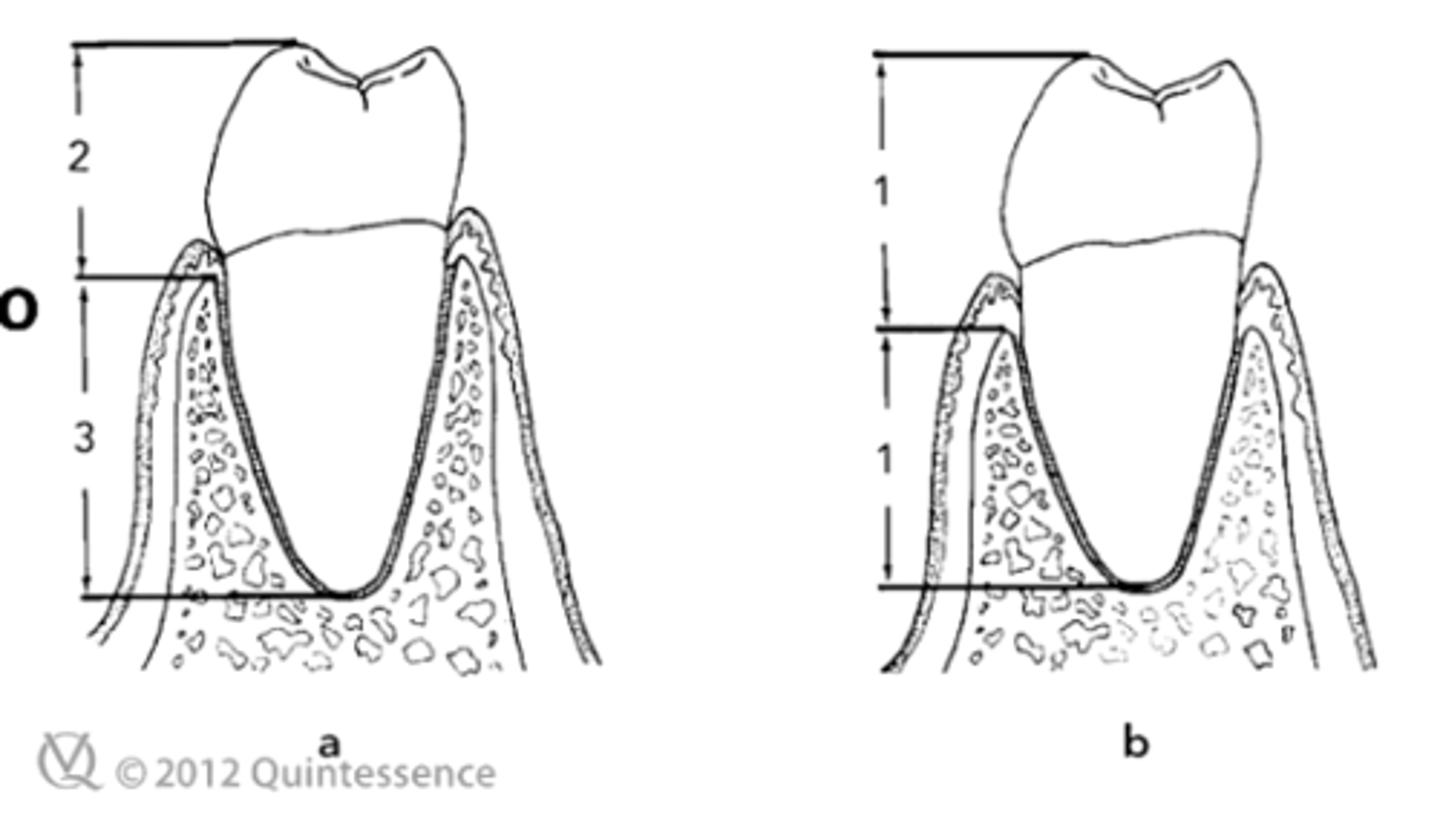
review: retention
feature of tooth prep that resists dislodgment of crown in a vertical direction or along path of placement
- usually due to tooth being too short
review: resistance
feature of tooth prep that resists dislodgment of crown in an axis other than the path of placement
the most common problem that will fail your tooth prep form is
a) retention form
b) resistance form
c) stability form
b) resistance form
high, medium, low smile line
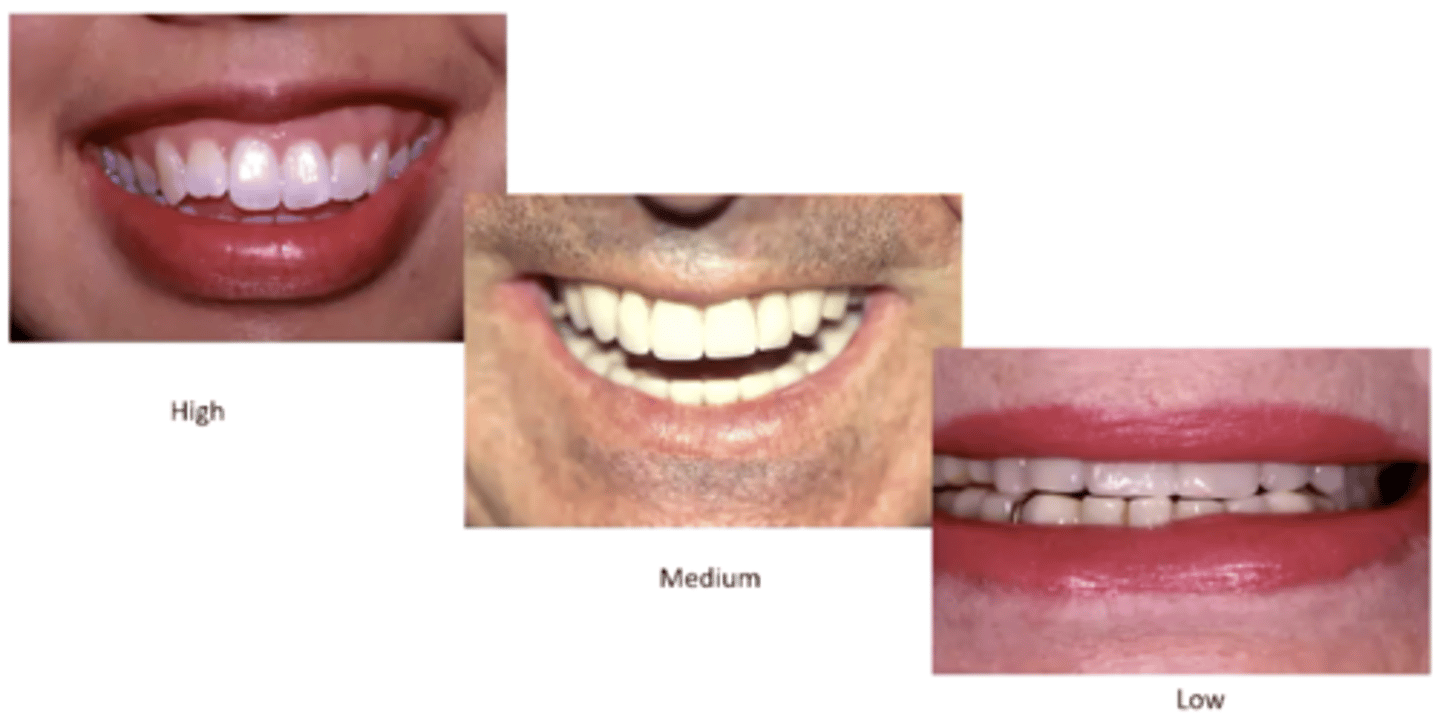
you want ________ gingiva
a) thin scalloped
b) thick flat
b) thick flat
T/F proximal margin contacts must be broken prior to final impressions
TRUE -- if the margin is too close to the next tooth, it can cause an inaccurate impression
you must use the _______ to pack the cord.
cord packer -- the cord packer can be used as a tool to verify clearance. this is something a perio probe will not be able to achieve
T/F you should always eliminate the main etiology of underlying systemic condition prior to fixed prosth therapy
TRUE
you should improve:
a) function over form first
b) form over function first
a) function over form first
all the following are considerations of the tooth condition before tooth preparation except:
a) crown-root ratio
b) angulation
c) path of insertion
d) resistance/retention form
e) position
c) path of insertion
all the following are considerations of the environmental condition before tooth preparation except:
a) occlusal analysis
b) smile line
c) tissue biotype
d) crown position
e) root proximity
f) PDL surface
g) root configuration
d) crown position
T/F the finish line should NOT be under contour of adjacent teeth
TRUE
when choosing abutment teeth, what is better?
a) circular cross-section
b) greater faciolingual dimension
c) greater mesiodistal dimension
b) greater faciolingual dimension
so premolar (>>faciolingual) is greater than central incisor (circular)
when choosing abutment teeth, what is better?
a) fused roots
b) divergent roots
b) divergent roots
the PDL surface area of the abutment teeth should EXCEED/BE APPROXIMATELY EQUAL TO ___________________
the surface area of the teeth being replaced by a fixed partial denture

example of the PDL surface area rule
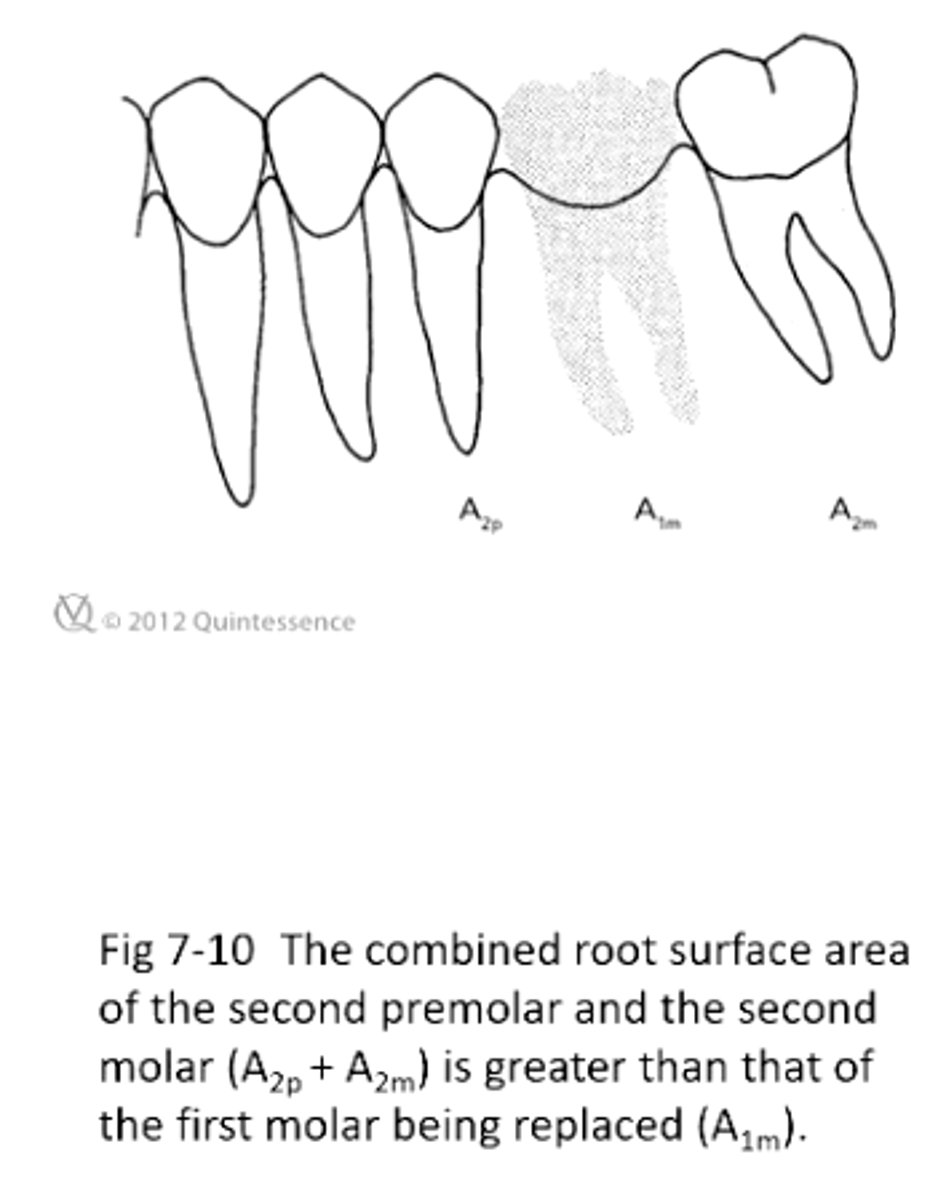
there is _________ times deflection if pontic thickness is decreased by 1/2
a) 2x
b) 4x
c) 8x
d) 16x
e) 27x
c) 8x

when would you have a thinner pontic?
full-gold vs PFM crown
there is _________ times deflection if pontic span length is doubled
a) 2x
b) 4x
c) 8x
d) 16x
e) 27x
c) 8x

there is _________ times deflection if pontic span length is tripled
a) 2x
b) 4x
c) 8x
d) 16x
e) 27x
e) 27x
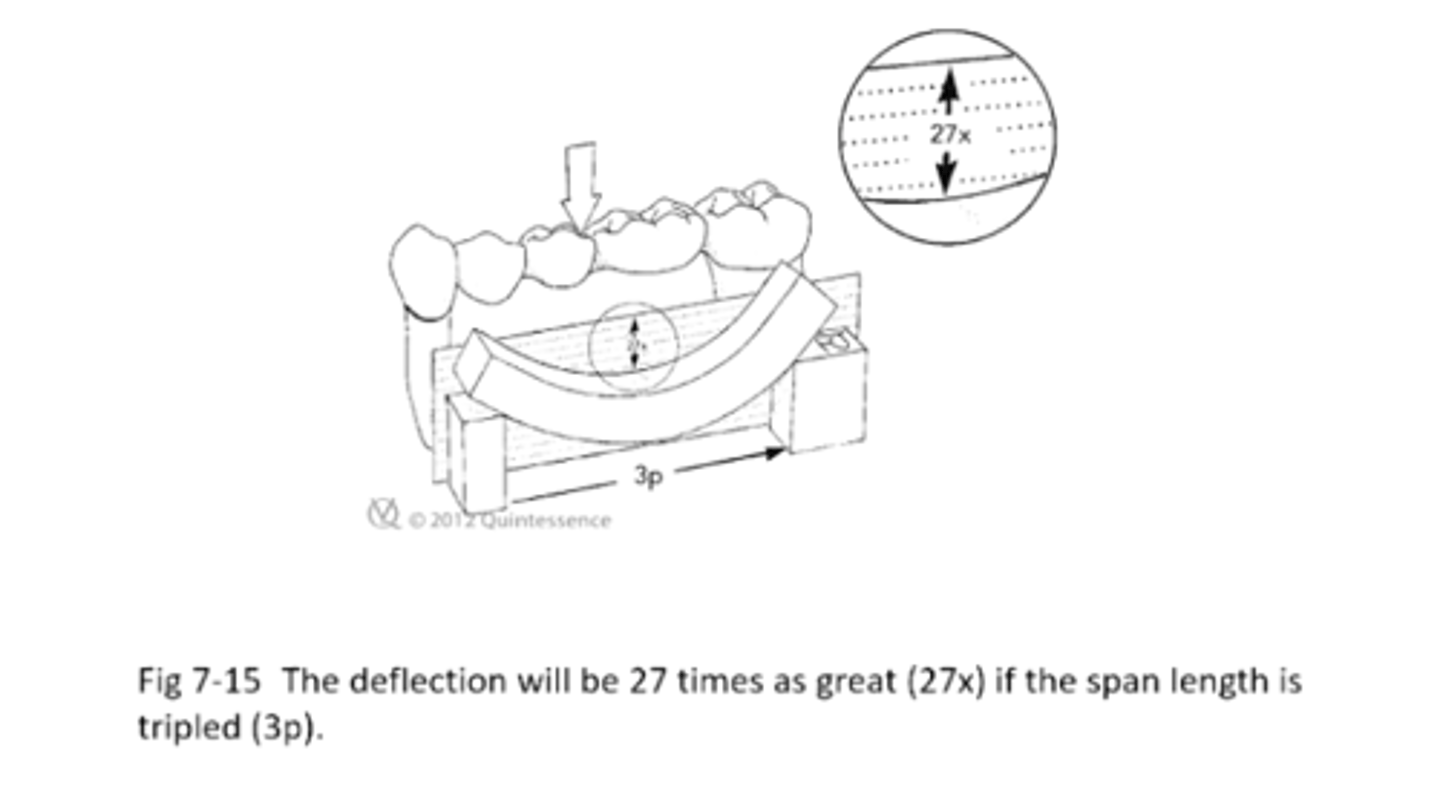
what can you do to counteract the mesiodistal torque resulting from the deflection of the metal in bridge?
create facial and lingual mechanical grooves to counteract M-D torque

T/F the retainers on secondary abutments will be placed in tension when the pontics flex, with the primary abutments acting as fulcrums
TRUE
T/F forces on the pontic of a cantilever fixed partial denture tend to tip the fixed partial denture or the abutment tooth
TRUE
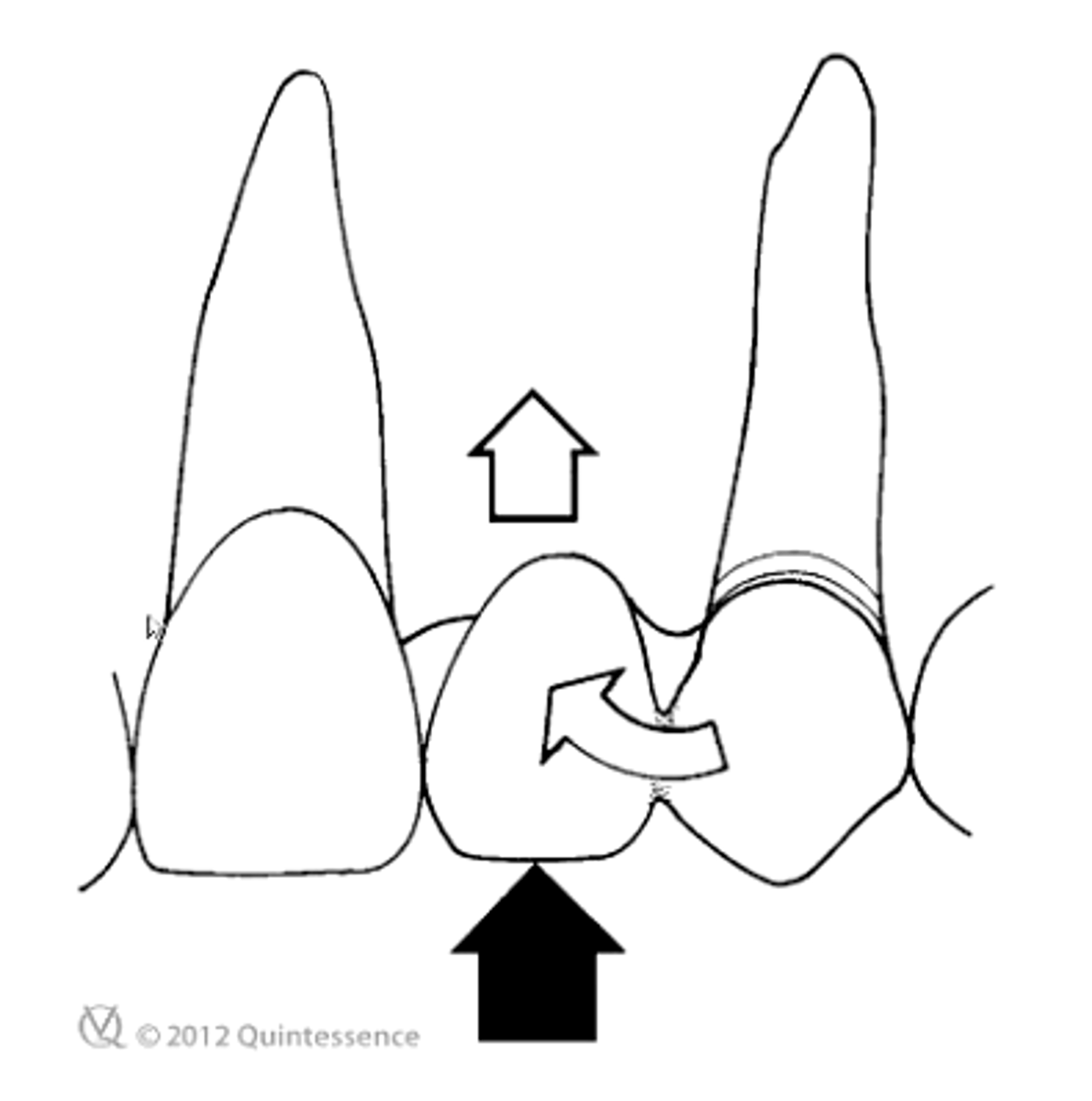
if you had to choose between two teeth to determine which would be the cantilever abutment tooth, what parameters should you look at?
crown-root ratio
root configuration
why shouldn't you place a full-size molar cantilever pontic in the mouth?
it places a great deal of stress on the mesial abutment
- instead, you can make the pontic smaller (like premolar size) to minimize stress on abutments

pts needing a 6-unit anterior FPD with a _________ arch form will have a longer cantilever arm from the canine line
a) taper or oval arch
b) square arch
a) taper or oval arch (left)
- right is square arch form

is having a short or longer cantilever arm from canine line better?
shorter -- to have less torque to abutment teeth
so lets say you have an oval arch form and require a 6-unit FPD in the anterior region. you have a long cantilever arm from the canine line. what are some ways you can help reduce the amount of torque exerted on the FPD?
you can place two implants anterior to the canine line so that there is a smaller distance from the fulcrum line and therefor less torque
which has a better prognosis?
a) replacing maxillary canine
b) replacing mandibular canine
b) replacing mandibular canine
why is the prognosis of replacing mandibular canine better?
forces are directed inward and the pontic is closer to the interabument axis
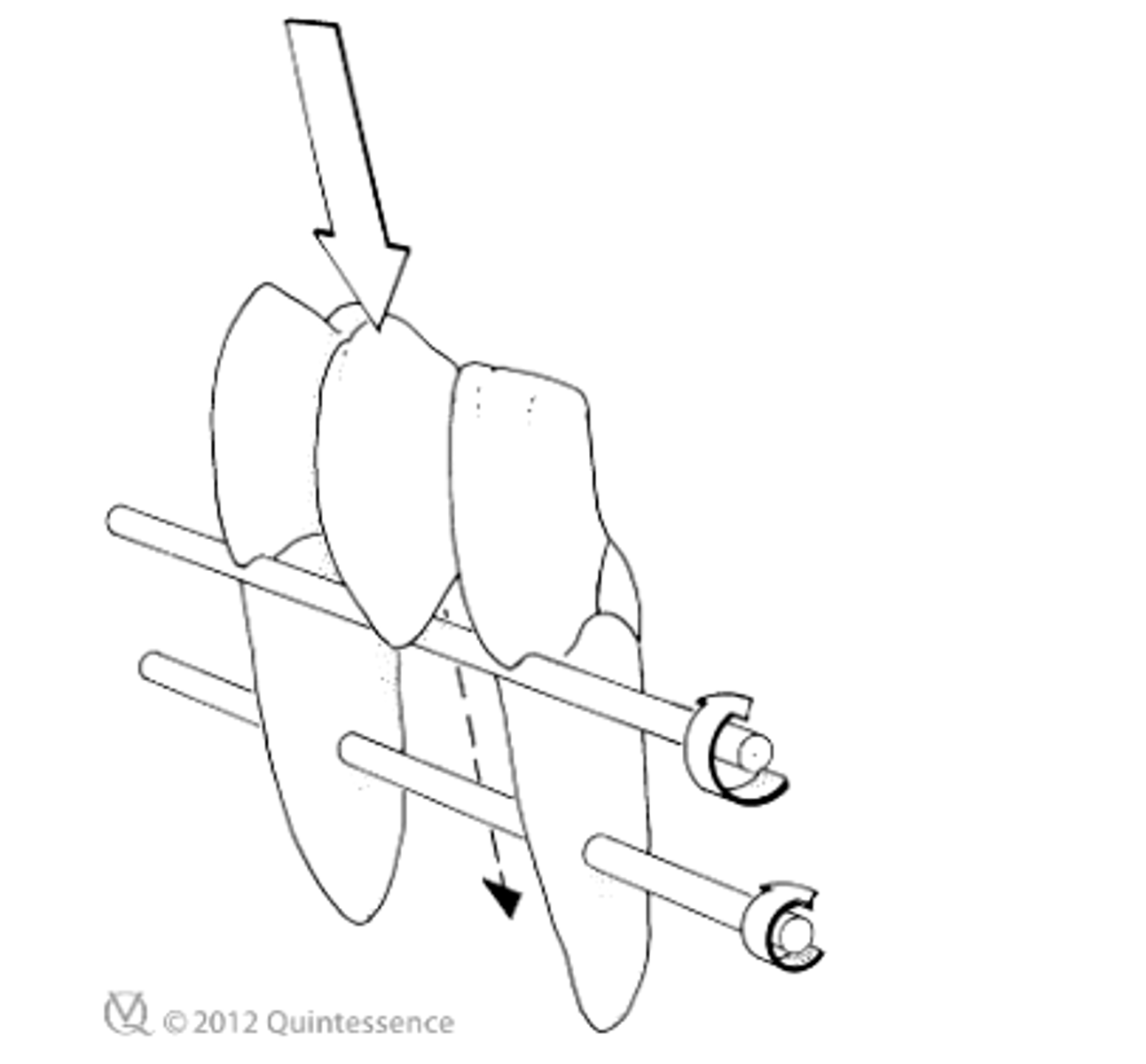
why is the prognosis of replacing maxillary canine worse?
forces are directed outward, and the pontic lies farther outside the interabutment axis
it is hard to place a 3 unit bridge if the mandibular molar tilts _________
mesially -- there is a discrepancy between its long axis and that of a premolar
you can orthodontically upright a tilted molar from its mesial position. what will you have to consider when doing orthodontic treatment?
every time you distalize the molar, you have to check the VDO and make any occlusal adjustments to establish a proper VDO
what is another way you can compensate for a mesially tilted molar if you want to make a 3 unit bridge?
you can create a finish line to insert a proximal half crown as a retainer
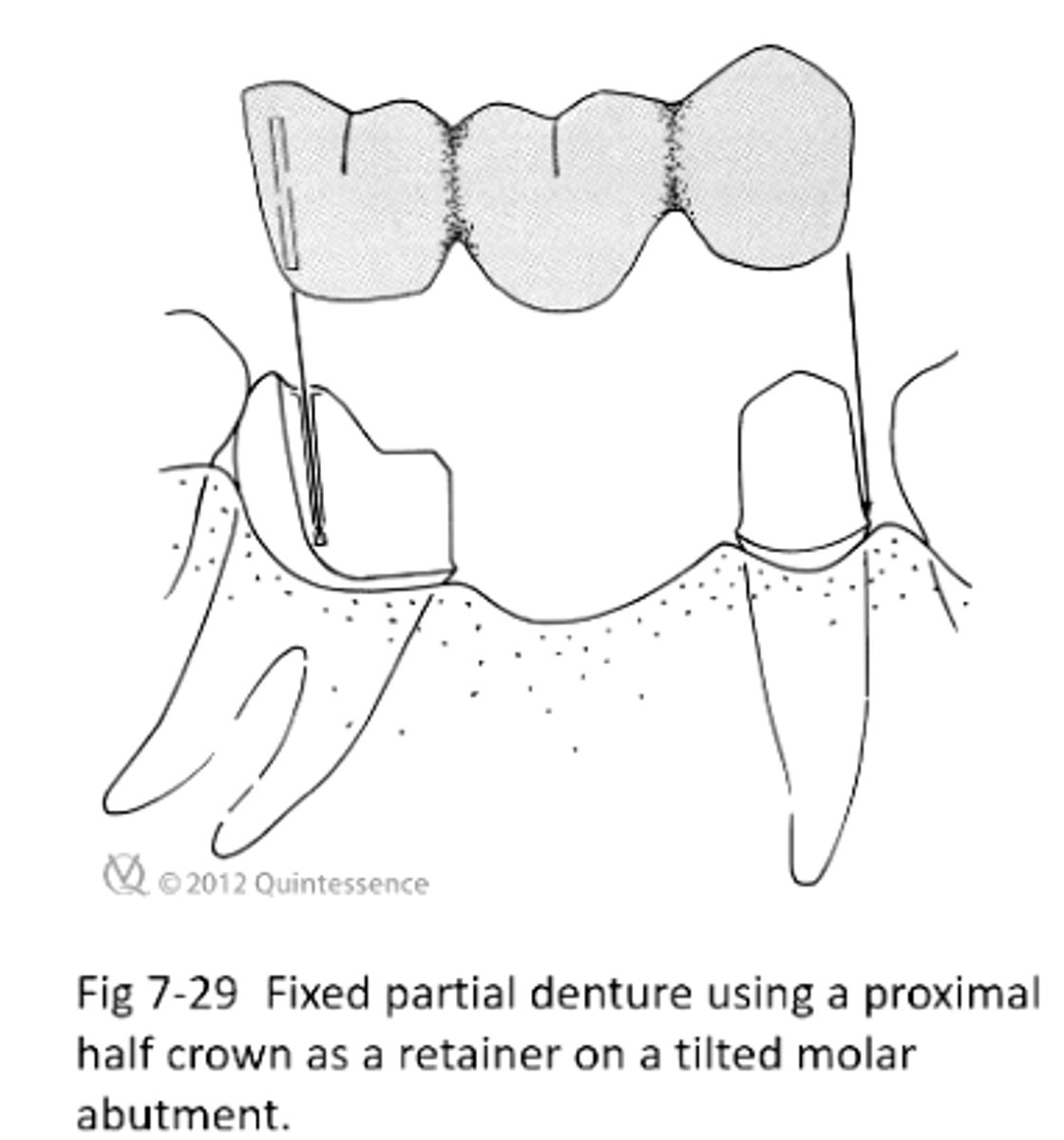
intermediate (pier) abutments are usually done on the
a) maxilla
b) mandible
a) maxilla
intermediate (pier) abutment
a non-rigid connector on the middle abutment to isolate forces to the segment of the FPD to which it is applied
when you place an intermediate abutment, you should place it on the _________ aspect of the abutment
a) mesial
b) distal
c) buccal
d) lingual
b) distal -- seating action
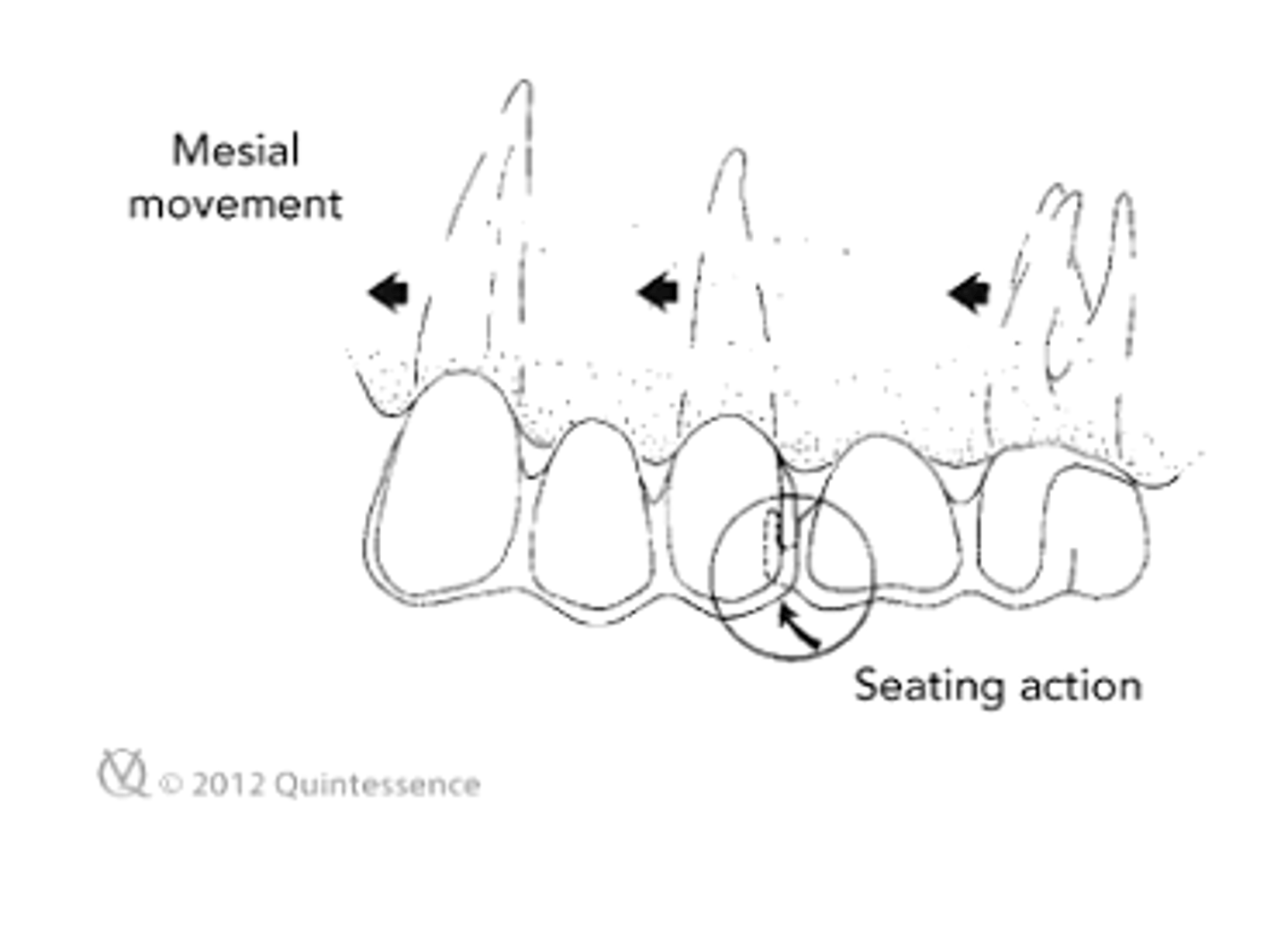
what does placing the intermediate abutment on the mesial aspect of the abutment do?
mesially directed movement will unseat the key
what is the criteria of choosing to do a full-restoration crown?
moderate to severe structural damaged dentition:
- presence of appropriate total occlusal convergence angle (15-20º conical)
- presence of 3-4 mm wall height
- presence of ferrule of 1.5-2.0mm for an endodontically treated tooth
the concept of tx for partial edentulism includes all the following EXCEPT:
a) use dental implants strategically
b) most cases should have abutment mesial to cantilever pontic
c) avoid long cantilever bridge
d) plan for short span FPD, either implant or teeth-supported
b) most cases should have abutment mesial to cantilever pontic -- i pulled this out of my ass